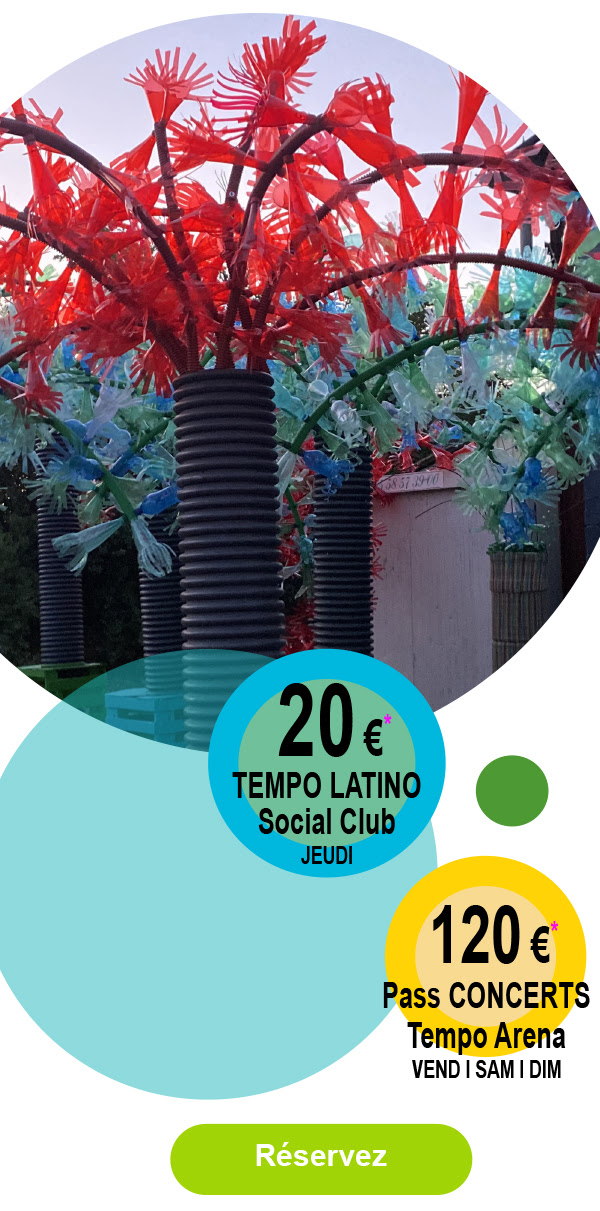Tempo Latino Social Club presents:

ANA Tijoux, emblematic figure of Latin rap, joins us at the opening of the festival! A strong and committed French-Chilean artist born in her native Lille to Chilean parents exiled by the dictatorship, ANA has bult her musical style on the fundamental rhythms of Rap and the Chilean folkloric colors of her origin.
Her background, influences and temperament give her an indomitable stage strength to tackle political issues wildly. From Europe to Latin America, singing in Spanish with humor and rebellion has led her to consolidate her presence in the international scene of the Latin Rap wave and win Grammys.
After opening for Iggy Pop, the iconic Stooges figure said that “she knows what she’s doing!”
The Tempo Latino Social Club welcomes her into their circle of shared values with proudly and respectfully.
Tempo Latino
The Conga sets the TEMPO!
Between psychedelic palm trees, tropical white sand and the first day’s frenzy, we’ll meet at 19h on the Conga stage to embark on the 28th edition.
Imagined in 2022… the Tempo Latino Social Club*, born from our associative, voluntary and committed structure, brings us together to share our values of cultural and musical mestizaje…
*This evening does not cover the pass for the Tempo Arena concert.

Immediate boarding for the Tempo Latino 2023 ¡El Único!
THANKS
Public… Artists… Technicians… Partners… Professionals…
Tempo VOLUNTEERS



















